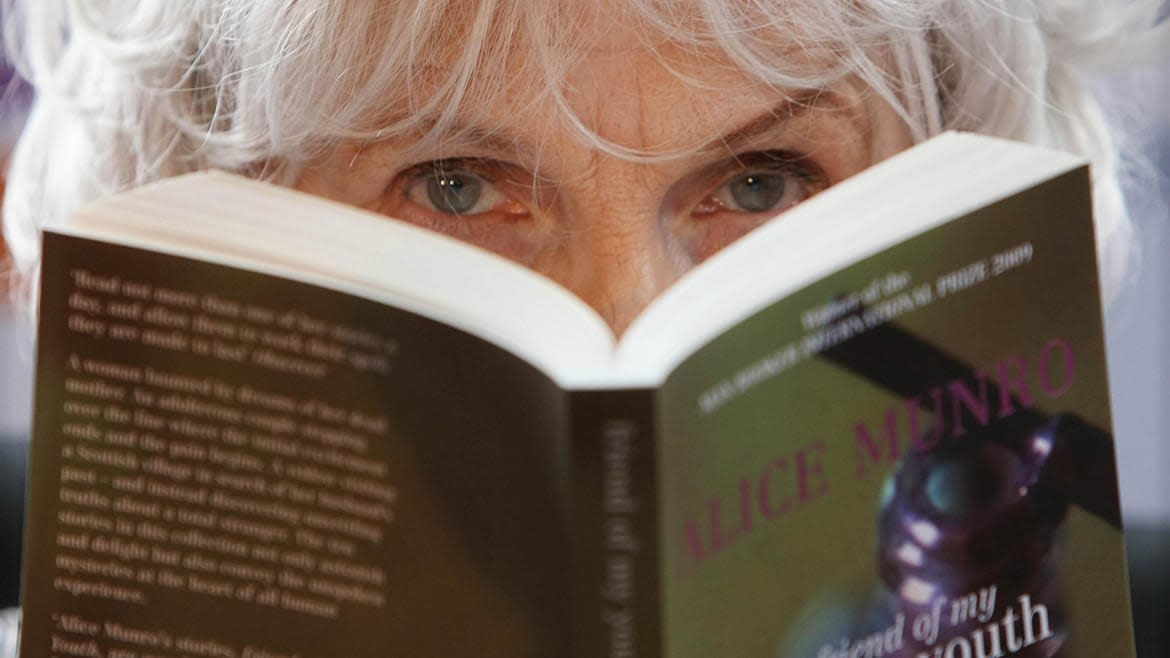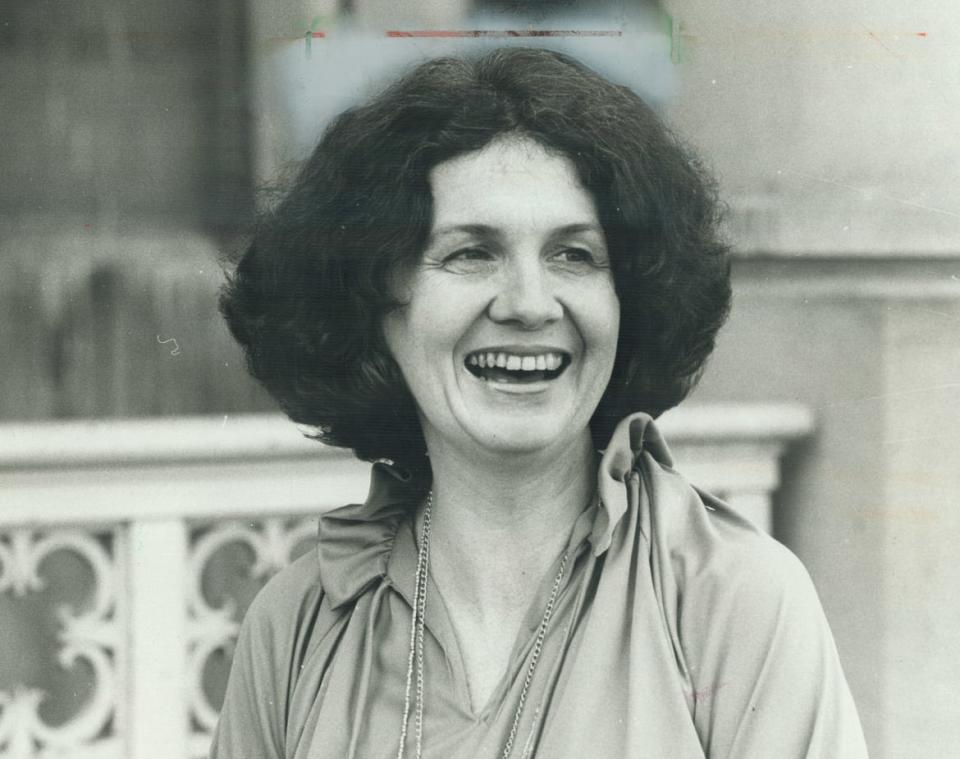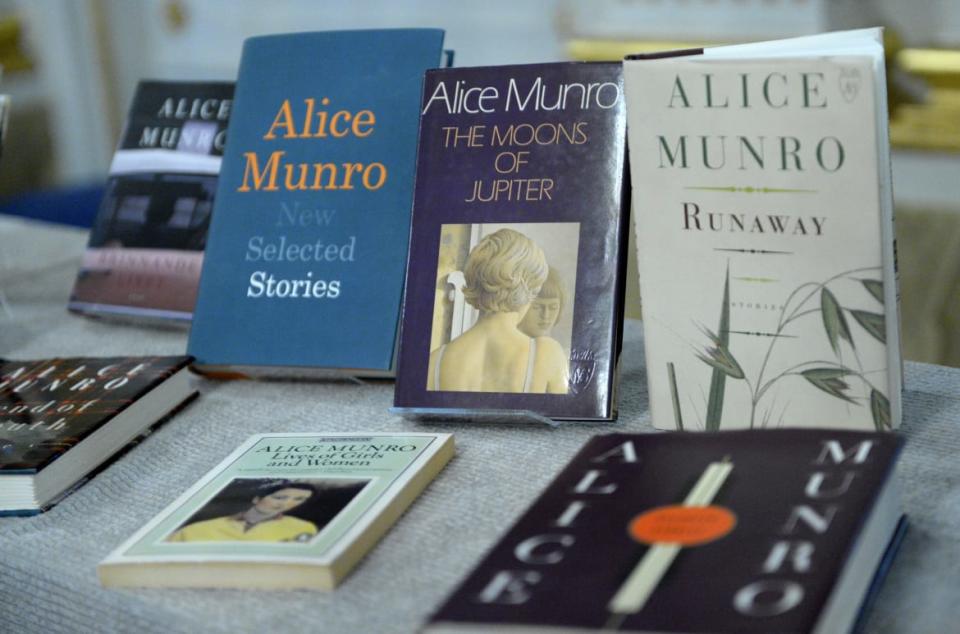Nobel Prize Winning Author Alice Munro Dead at 92

- Oops!Something went wrong.Please try again later.
Alice Munro took Flaubert’s suggestion to “be regular and orderly in your life, so that you may be violent and original in your work” to new levels when the Nobel Prize Committee had to leave a message on her answering machine to let her know she’d won the Nobel for Literature in 2013. She was probably out for a walk.
Though the Canadian author has, for decades, been considered the master of the short story, her stories are not short. They are quite long, and many of the characters and locales intersect with one another. In her fifty-year career, even Munro’s own work wasn’t off-limits. She has tinkered with stories published decades ago, rewriting sections or expanding endings and republishing these Frankensteins in The New Yorker. Like an artist that repurposes her canvas, Munro’s is a constantly evolving work. That was until her death on Monday at age 92.
But Munro’s message, if there is any “message,” is that no artist’s work is ever complete. Perhaps there’s a feeling of satisfaction, as she acquiesced in a rare interview after she was awarded the Nobel. There’s a good feeling at a job well done. But just because one has published much, or accomplished much, doesn’t mean the work is finished. Death provides an ending in Munro’s work. But it leaves many unanswered questions.
Perhaps no other writer is able to write so richly about human emotion with so little exposition or explanation about place, time, or people. Munro assumes that you understand, and you do. And just when you begin to wonder, she provides you with a detail so nuanced that only someone who has made a career of observing people would be able to capture: a moment that seems quiet but in actuality vibrates for us with meaning, searing our memories until our brains stop pulsing.
For example, in one of my favorite Munro stories, “Amundsen,” she describes the doctor’s gait as a means of his confidence in leaving his lover high and dry. “He comes out with the ticket in his hand and what I think is a lighter step. He must have realized this because as he approaches the car he becomes more sedate.” This sort of detail is one that only someone who was really paying attention would notice. Only someone whose heart was being shattered into a million pieces would remember something as elegantly disturbing as this. And that writer is Alice Munro.

Alice Munro.
When Munro was getting started, or even by the time she had hit a good steam, her work was quietly chugging alongside the work of similarly prolific writers like Philip Roth, or John Updike. While Roth and Updike were ejaculating about men who were loudly and, in many cases, obnoxiously exploding the idea of monogamy, Munro’s fireworks are all the more noticeable because of her extreme quietness. Like a twig breaking in a silent forest, Munro’s flares of sexuality and violence make you freeze.
Again, in “Amundsen,” our protagonist, a young teacher who goes to teach tubercular children in a sanatorium and falls in love with the surgeon there, describes her lust for him, watching him drive: “Right now I believe I could lie down for him in any bog or mucky hole, or feel my spine crushed against any roadside rock, should he require an upright encounter. I know too that I must keep these feelings to myself.” This is the kind of sentence that makes you smile. It’s simultaneously sexy, and so silly. The language! “Mucky hole.” The idea of having sex in a “bog.” “An upright encounter”! It manages to capture the ridiculousness of sex and the scorching obsession of new love.
I first read Alice Munro on a beach vacation with my family when I was in high school. I had started picking up issues of The New Yorker after discovering a friend of mine was a subscriber, and I thought there was nothing more indulgent than to read The New Yorker cover-to-cover living in suburban Georgia. The story I read was part of “Runaway,” Munro’s magnum opus of sorts. But really, each Munro story is its own universe, its own self-contained masterpiece. Someone once mentioned in conversation that he wished Munro had written novels. I don’t. I’m glad that there are so many worlds to dip into. In a way, it’s the only kind of work that vaguely resembles real life, where there are so many different people one person could become.

Some of Canadian author Alice Munro books.
In “The Ottawa Valley,” Munro writes in a rare moment, about her motivation in embarking on this particular story. “The problem, the only problem, is my mother. And she is the one of course I am trying to get; it is to reach her that this whole journey has been undertaken. With what purpose? To mark her off, to describe, to illuminate, to celebrate, to get rid of her; and it did not work, for she looms too close, just as she always did.”
Alice Munro was a private person and an even more private writer. She gave few interviews and there are no long profiles to read about her, no cache of unpublished work, no illicit love affairs or great tragedies to speak of. In the end, it comes down to those immensely personal moments and memories, the kind that define her work, that define our lives. In an obituary you will read about a person’s career, where he or she lived, their marriages, children, if any, and survivors. The real story has and always will belong to the deceased.
Get the Daily Beast's biggest scoops and scandals delivered right to your inbox. Sign up now.
Stay informed and gain unlimited access to the Daily Beast's unmatched reporting. Subscribe now.

